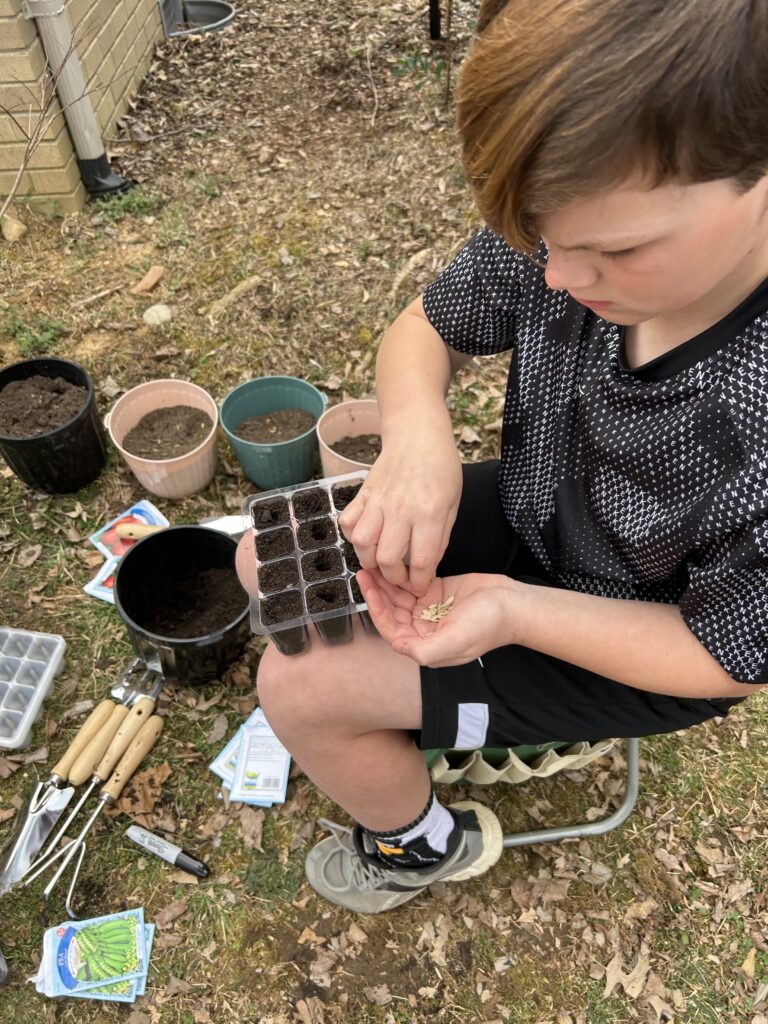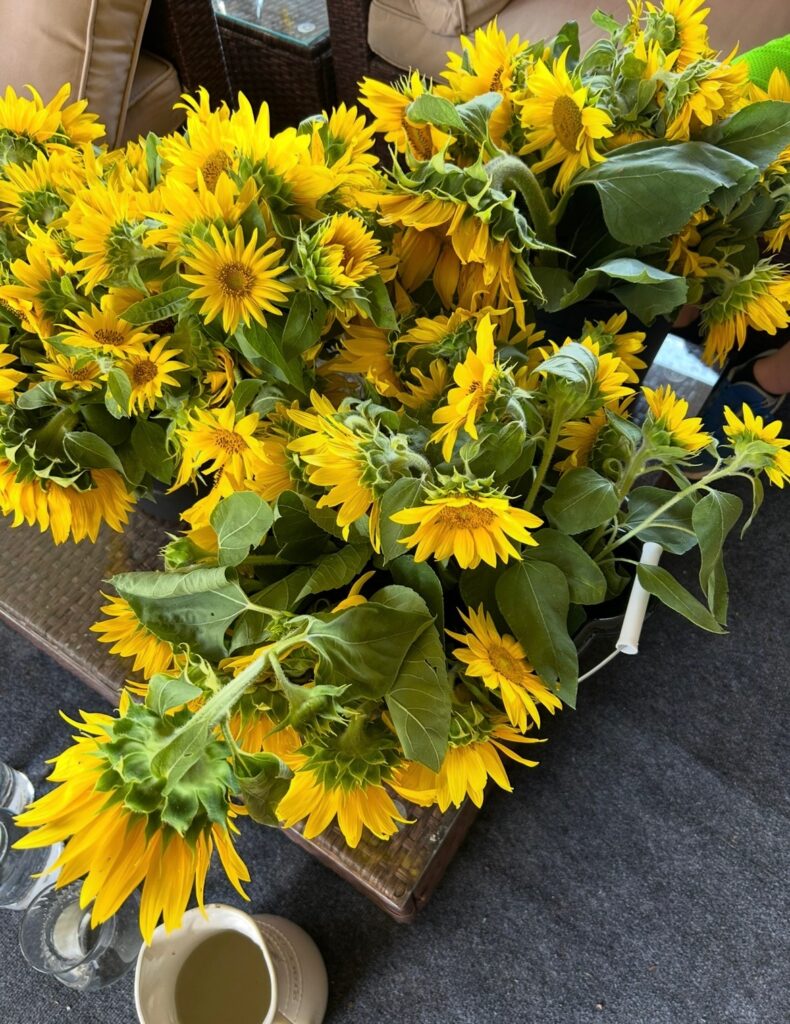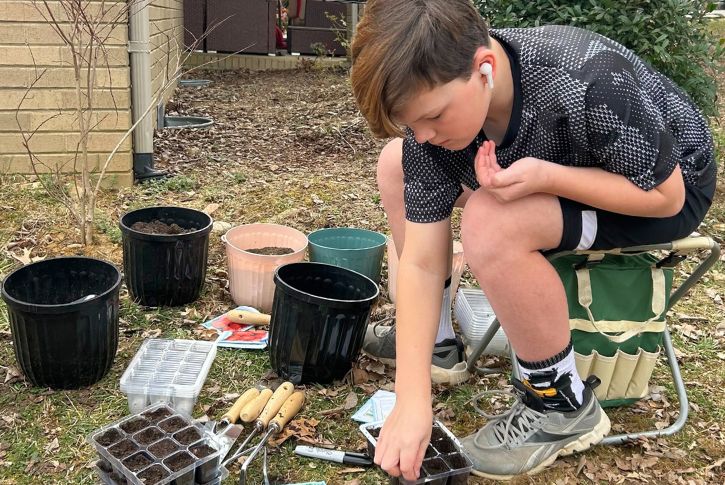Carson White is a student guest journalist from John Sevier Middle School in Kingsport, Tennessee. He is 12 years old and in the 7th grade. He is a straight A student, a blackbelt in Taekwondo, and enjoys playing clarinet in the school band. Carson is the oldest of three and a leader in his family, school, and community. He is the son of Jenny White and was excited to share this article he wrote with Tennessee families.


At my home, in Northeastern Tennessee, winter is slowly fading, and the sun is finally back and ready for spring! Even as a middle school student who’s, “too cool for school”, I love gardening. Planting season is here and it’s about time to start planning our gardens. Personally, I enjoy preparing for my flower garden as much as I appreciate the flowers themselves.
For families like mine in Kingsport spring gardening is more than a pastime—it’s a chance to connect to nature, get outside, and even grow your own food.
What grows best in Northeast Tennessee?
Gardening in Northeast Tennessee isn’t quite like gardening anywhere else in the state. Thanks to our location in the Appalachian Highlands, we enjoy a unique climate: cooler spring temperatures, higher elevations, and fertile, well-draining clay-loam soils. These natural features mean we can start cool-season crops a little earlier and grow hardy flowers that might wilt in West Tennessee’s heat or Middle Tennessee’s humidity.
Northeast Tennessee’s elevation (1,500–3,500 feet in places), cooler nights, and well-draining but fertile soil make it ideal for specific plant growth. The flowers and vegetables that grow best tend to be hardy, adaptable, and able to handle cooler temperatures and rich, sometimes clay-heavy soil. Many of the most successful flowers here have strong stems, long blooming seasons, and deep roots that help them stay healthy through unpredictable spring weather. The vegetables that do well are often cool-season crops or heat-lovers that appreciate the long days of summer. Whether leafy, climbing, or fast-growing, these plants thrive with plenty of sun, regular rain, and the natural nutrients found in Appalachian soil.
One resource I like to use to determine what to plant when is The Farmer’s Almanac. All you have to do is put in your zip code and you can learn exactly when, where, how, and what to plant. Don’t worry, Northeast Tennessee, I did some of the research for you!
Black-eyed Susan
- When to Plant: Early spring or late fall
- How to Plant: Sow seeds directly or transplant young plants; space 12–18 inches apart
- Needs to Thrive: Full sun, well-drained soil, drought-tolerant once established
Coneflower (Echinacea)
- When to Plant: Early spring, after danger of frost
- How to Plant: Start seeds indoors or plant transplants outdoors
- Needs to Thrive: Full sun, well-drained soil, attracts pollinators like bees and butterflies
Bee Balm (Monarda)
- When to Plant: Mid to late spring
- How to Plant: Plant divisions or starter plants
- Needs to Thrive: Full to partial sun, rich and moist soil, space to spread
Columbine (Aquilegia)
- When to Plant: Early spring
- How to Plant: Sow seeds directly and thin seedlings to 12 inches apart
- Needs to Thrive: Partial shade, moist soil, cool spring weather
Zinnias
- When to Plant: After the last frost (late April to early May)
- How to Plant: Sow seeds directly into the garden
- Needs to Thrive: Full sun, regular watering, deadhead blooms to keep flowers coming
Best Vegetables to Grow in Northeast Tennessee
Broccoli
- When to Plant: March to early April
- How to Plant: Transplant seedlings into garden beds
- Needs to Thrive: Full sun, regular watering, mulch to keep soil cool
Tomatoes
- When to Plant: After the last frost (late April or early May)
- How to Plant: Transplant started plants; use cages or stakes
- Needs to Thrive: Full sun, deep watering, warm soil
Peppers
- When to Plant: Early to mid-May
- How to Plant: Transplant seedlings after soil warms
- Needs to Thrive: Full sun, warm nights, don’t overwater
Green Beans
- When to Plant: Mid-May
- How to Plant: Sow seeds directly into garden rows
- Needs to Thrive: Full sun, regular water, support for pole beans
Zucchini
- When to Plant: May
- How to Plant: Sow seeds directly or transplant starts
- Needs to Thrive: Full sun, plenty of space, consistent watering
Here’s a tip to get other kids interested in planting: Pick one cool plant (like a giant sunflower) and make it a “garden challenge” with your friends. See whose plant grows the tallest or blooms the fastest. You can even trade seeds or take pictures to share your progress. When gardening becomes a game or a team project, it’s way more fun—and everyone learns something along the way!
Whether you’re planting flowers for the butterflies or veggies for your dinner plate, growing things with your own two hands feels awesome. So grab some seeds, dig in the dirt, and start your garden adventure this spring. You might be surprised at what you grow—and how much fun it can be!



